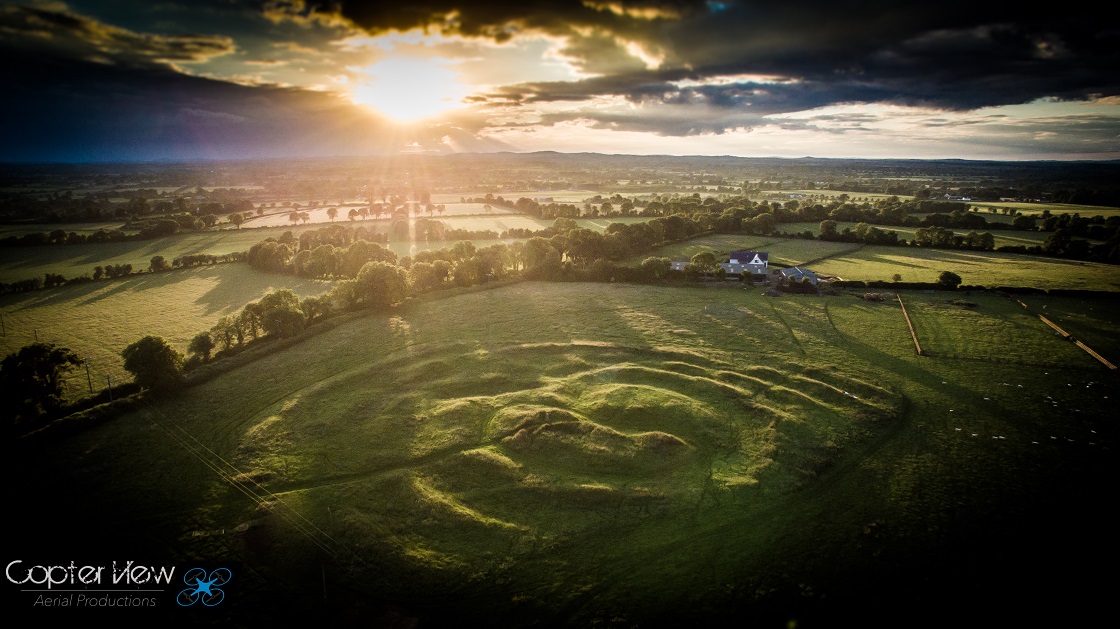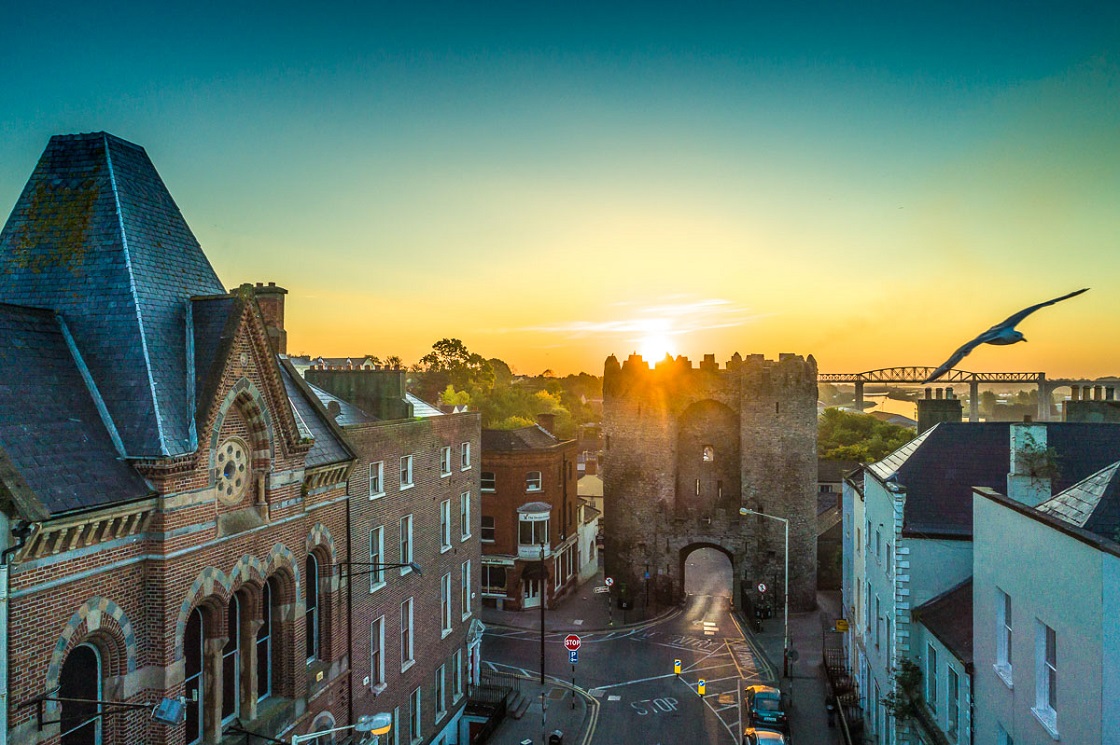Batterstown Kilcloon Heritage trail
Journey Through Time: Discovering the Rich Heritage of Batterstown and Kilcloon
Batterstown Kilcloon Heritage Keepers

Batterstown, Kilcloon, Co Meath
Free

Journey Through Time: Discovering the Rich Heritage of Batterstown and Kilcloon
Batterstown Kilcloon Heritage Keepers

Batterstown, Kilcloon, Co Meath
Free
Samhain, the pagan harvest festival that we now call Halloween, was an important event celebrated at the end of October and start of November in Ireland and Britain during the so-called ‘Celtic’ period. It marked an important transition time as the summer ended and the cold winter approached (although there is no evidence it was the start of a Celtic ‘New Year’ calendar).

Boann (Bóinn) is the mythical goddess of the River Boyne, and of poetry, fertility and knowledge.
According to legend Boann created the Boyne. Though forbidden to by her husband, Nechtan, Boann approached the magical Well of Segais, which was surrounded by nine magic hazel-trees. Hazelnuts were known to fall into the Well, where they were eaten by the speckled salmon (who, along with hazelnuts, also embody and represent wisdom in Irish mythology).

Located on the east side of Castle Street, this building ranks as the largest fortified town house to survive in Ireland. The mass of its masonry makes it the most noticeable of the remains of the medieval town of Ardee. Dating from the fifteenth century, this structure is known as ‘Ardee Castle’, ‘St Leger’s Castle’ and ‘Pipard’s Castle’.

Brú na Bóinne is one of the most important prehistoric megalithic sites in Europe drawing thousands of visitors daily. Each of the tombs has their own myths to explore against the beautiful backdrop of the gently meandering River Boyne. You will marvel at the skill of these prehistoric builders The Dinshenchas, from the Book of Leinster (a manuscript from the 12th century) is a very useful source for anyone interested in Irish mythology. This collection of poems tells the origin of place names, events and characters. It recounts the legends behind Brú na Bóinne, the Palace of the Boyne.

Sir Arthur Aston's golden leg: Drogheda was obviously an important defensive location as a bridging point and a port. This is evident in the walled town's history and none more so than when Oliver Cromwell and his forces laid siege to the town in 1649. The unfortunate Sir Arthur Aston had been made Governor of Drogheda a year earlier. It was supposed to be an easier assignment for the career soldier who had served military campaigns in Europe and the English Civil War. He had lost his leg in a riding accident and so he was appointed to Drogheda to ease into retirement.

Similarly to Tara, the Hill of Slane`s mythology predates the arrival of St. Patrick.
According to the Dinshenchas the burial mound atop the hill is the resting place of one of Ireland`s earliest kings; Sláine. He was the leader of the Gálioin, a division of the Fir Bolg.

The Hill of Tara is the jewel in the crown of the Boyne Valley landscape. A site that has been in use for more than 5000 years as a place of burial and assembly, it grew to fame as the legendary inauguration site of the ancient High Kings of Ireland. From its rolling slopes one can see all the way to the other great sites of the Boyne Valley, including Loughcrew Cairns, the Hill of Slane, Trim Castle and beyond. In later centuries it remained the focus of Gaelic identity and remains to this day the beating heart of Ireland.

Hill of Tara,
Dunsany,
Navan
Co. Meath
C15 P44W
From Navan:
Get on the R147 heading towards Dublin. Continue on this road (through three roundabouts) for about 8Km. Take a right at the sign for the Hill of Tara. Continue up the hill until you reach your destination on the left.
From Trim:
Take the R154 headed towards Dublin/Clonee. After 5km turn left for Kilmessan on L2205. In Kilmessan take a sharp right onto Skein Abbey. Continue to the end of this road and take a left, arriving at the Hill of Tara.
Via M1 Motorway or Drogheda:
Take the M1 (this road is tolled) coming from Belfast. At junction 10, take the N51 exit to Drogheda (North)/Navan/Collon. At the roundabout, take the 1st exit onto N51 for Slane. In Slane take a left onto the N2 towards Dublin. Take a right onto the R153 for Navan/Kentstown. Take a left for the road towards Trim. Continue on this road until you reach the R147. Take a left onto the R147 and continue through the two roundabouts. Take a right at the sign for the Hill of Tara. Continue up the hill until you reach your destination on the left.
From Dublin:
Take the M3 (this road is tolled) headed for Cavan. At junction 7, take the R147 exit to Skryne/Johnstown. At the roundabout, take the 1st exit onto R147. Take a right at the sign for the Hill of Tara. Continue up the hill until you reach your destination on the left.
Hill of Tara accessible all year round
Visitor Centre
11 May – 14 September 2023
Daily 10:00 – 18:00
Last admission 17:00
Please see the Heritage Ireland website for visitor centre opening hours.
Admission to visitor centre with guided tour (Please note, no credit card facilities on site):
Adult: €5.00
Senior/Group: €4.00
Child/Student: €3.00
Family: €13.00
Admission to the site: Free of Charge
The area just south of Inbher Colpa (the mouth of the River Boyne) has some beautiful beaches stretching from the north of Mornington through Bettystown as far south as Laytown. Typical of the Boyne Valley, each of these coastal towns and villages has their own interesting folklore.

Kells is synonymous with early Christian architecture and it remains one of Ireland's greatest monastic settlements. Before the arrival of Christianity Ceanannas Mór, the Irish for Kells, meaning “great residence,” was a royal residence, likely on the nearby Hill of Lloyd, much like the famous Hill of Tara. It was't until the 6th century that Kells came to prominence as a monastic settlement. St. Colmcille or Columba was granted Kells by the then High King, Diarmuid MacCarroll, of the Uí Neill.
